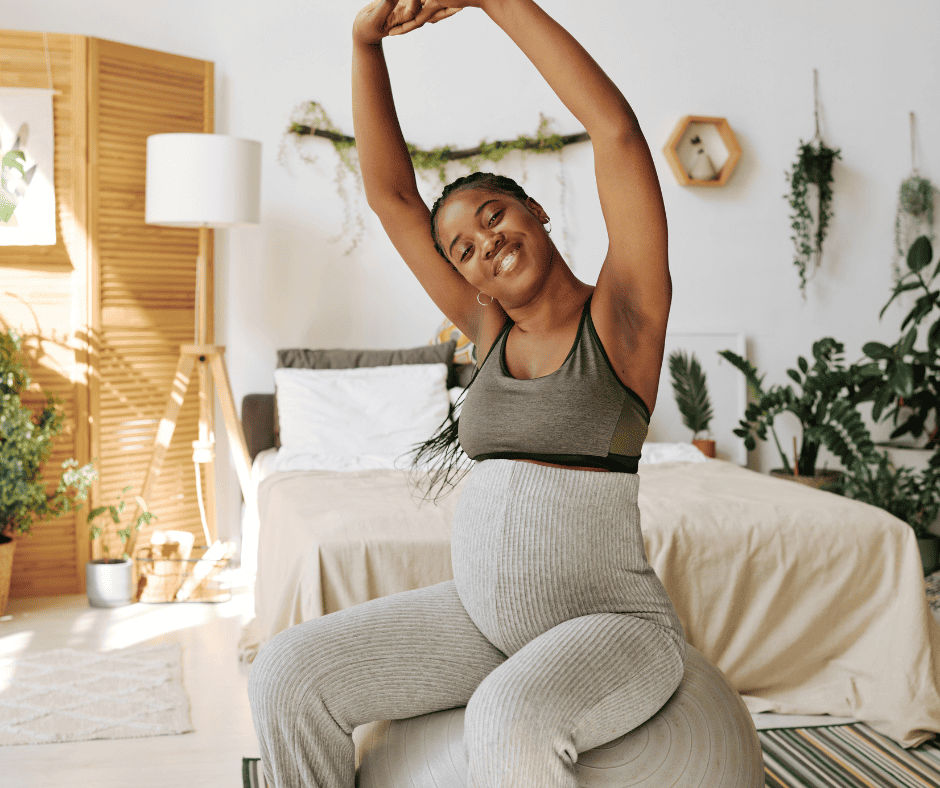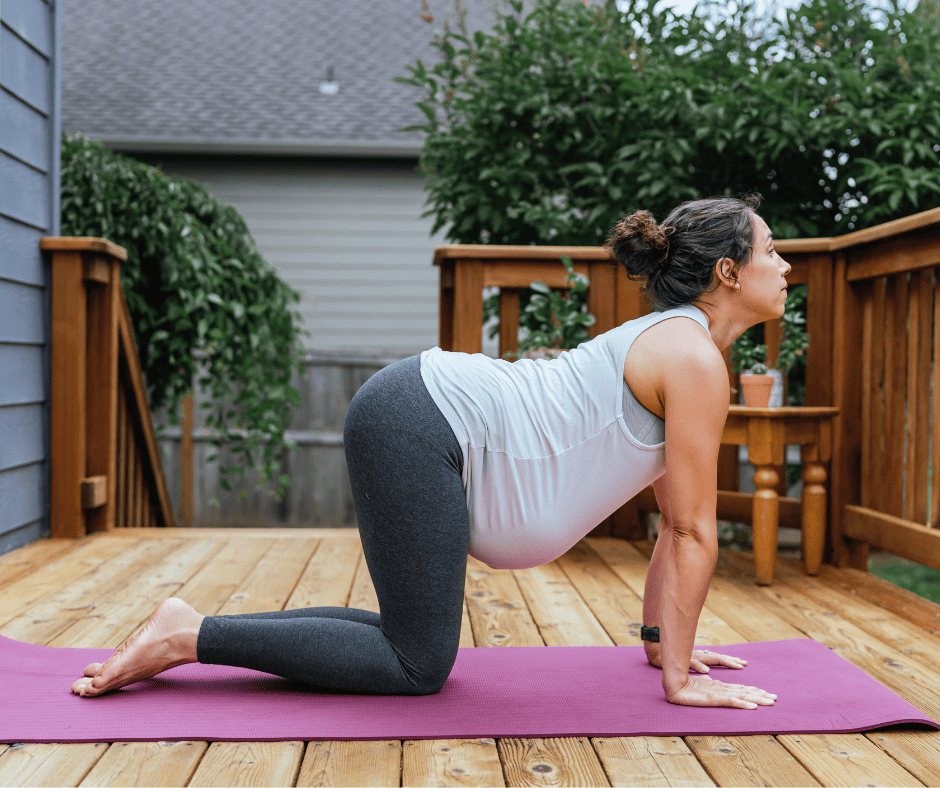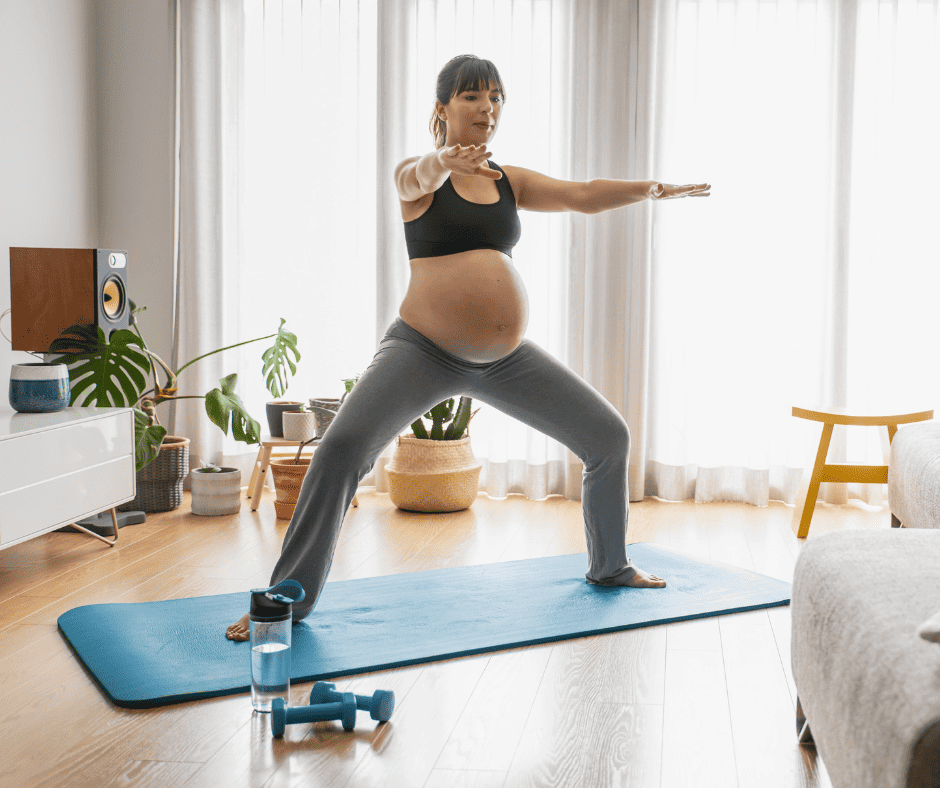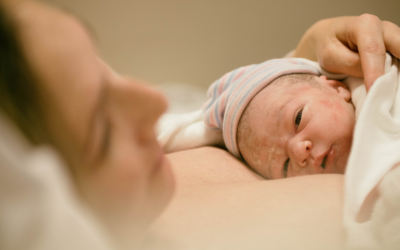
So much of your life changes when you find out that you’re pregnant. But, does your exercise routine have to? And, if you’ve never really worked out before, should you start now? There are pregnancy-safe exercises that are extremely beneficial in helping you have a more comfortable pregnancy and can even lead to a better labor and delivery experience.
What Kinds Of Exercises Are Safe During Pregnancy?
A pregnancy exercise plan can include many different forms of workouts, each with its own pros:
- Swimming
Being in water can help you feel way more agile and is easy on your joints. So, swimming is a fantastic exercise to do throughout your pregnancy. “A dip in the pool may also help relieve nausea, sciatic pain and puffy ankles,” adds What To Expect.

- Prenatal Yoga
This form of yoga is especially for pregnant bodies, so is a fantastic way to work out. According to Parents, “Prenatal yoga may be the cure for what ails you if you’re suffering from common pregnancy discomforts such as lower back pain, nausea, insomnia, headaches, shortness of breath, and carpal tunnel syndrome. By stretching and toning muscles, you can help blood circulate throughout the body in a healthy way.” Yoga can also reduce stress levels and mentally — as well as physically — prepare you for labor.
- Walking And Jogging
Walking and light jogging is a healthy cardio exercise for pregnant women. Cardio can increase blood flow and oxygen delivery to tissues, as well as lift your mood. Only walk or jog on flat surfaces, and don’t over-exert yourself when jogging.

Is It Safe To Do Squats When Pregnant?
You can practice squatting while pregnant, and you actually should! As Mayo Clinic explains, “Squatting during labor — even for a short amount of time — helps open the pelvis and allows more room for a baby to move through the birth canal. Practicing squats while you’re pregnant can make it easier to squat during labor.”
When you do squats, you engage and strengthen your pelvic floor muscles. These muscles play a crucial role in supporting the uterus, bladder, and bowels. A strong pelvic floor can help reduce the risk of urinary incontinence (leaking urine), a common postpartum condition.
How Often Should You Workout While Pregnant?
You can aim for 30 minutes of light to moderate exercise five days a week.
It’s important to wear comfortable clothes, supportive shoes (especially if you’re walking or jogging), ensure you’re getting enough nutrients through your diet to support the activity, and have water on hand to stay hydrated.
Also, choose exercises that you actually enjoy! If you like your workouts, it’s more likely you’ll stick with it.

While taking the time to prepare your body for labor, it’s also important to get your mind ready to bring home a newborn! Download the free Birth Made Simple course. This is full of evidence-based information so you can make the best decisions for you and your baby.
Can You Start A Pregnancy Exercise Program Even If You’ve Never Worked Out?
Yes! Actually, pregnancy is a great time to start an exercise regime. This is because exercise comes with a heap of benefits for your pregnant body. Not only can exercise make pregnancy more comfortable by relieving back pain and constipation, but it can also give you extra energy. March Of Dimes adds that a workout program can reduce your risk of pregnancy complications such as preeclampsia and gestational diabetes, and help you manage stress.
If you’re new to exercise, start slow with light exercises and then gradually increase your activity, “Begin with as little as 5 minutes a day. Add 5 minutes each week until you can stay active for 30 minutes a day,” advises The American College of Obstetricians and Gynecologists.
Generally speaking, exercise is important for having a healthy pregnancy. However, there are a few pregnancy and exercise guidelines to be aware of.

When Should You Stop Working Out While Pregnant?
It’s important to keep exercise light to moderate when you’re pregnant so that you don’t struggle with breathing — never exercise to the point of exhaustion, “As a general rule, you should be able to hold a conversation as you exercise when pregnant. If you become breathless as you talk, then you’re probably exercising too strenuously,” says the NHS.
If you experience any vaginal bleeding, dizziness, nausea, or abdominal pain, stop exercising and see your healthcare provider immediately.
Are There Any Pregnancy Exercises To Avoid?
The American Pregnancy Association advises against high impact exercises as well as exercises that have a high chance of falling. So, cycling and mountain biking, horseback riding, and skating are off the table. “Exercise that may cause any abdominal trauma, including activities that with jarring motions, contact sports or rapid changes in direction,” are also not recommended.
You should also avoid laying flat on your back for long periods, especially when you’re over 16 weeks pregnant. This is because the weight of your baby can press on the main blood vessel bringing blood to your heart, which makes you feel faint.
Most healthy women can maintain their exercise regime or start gentle workouts while pregnant. However, everyone is unique! It’s important to make sure that you have no underlying health conditions. Heart and lung diseases, high blood pressure, and anemia can make exercise unadvisable. Speak to your healthcare provider — they’ll be able to give you the green light.
Your body is going through so much as you’re growing your little one. Ensure you’re supporting your body through the changes and preparing yourself for labor with pregnancy-safe exercises.




